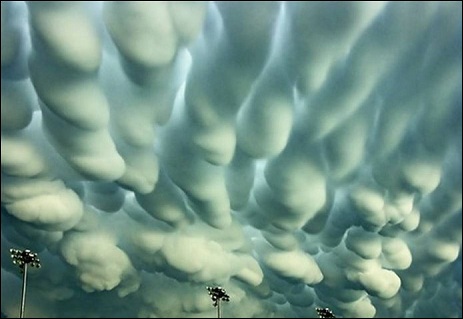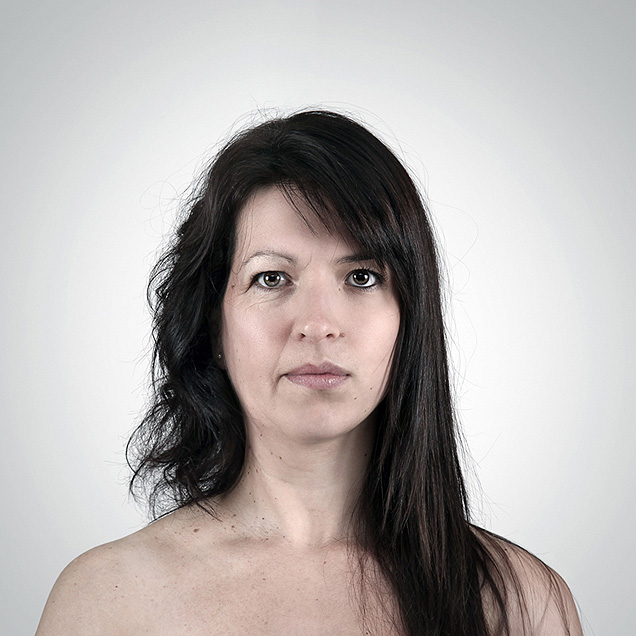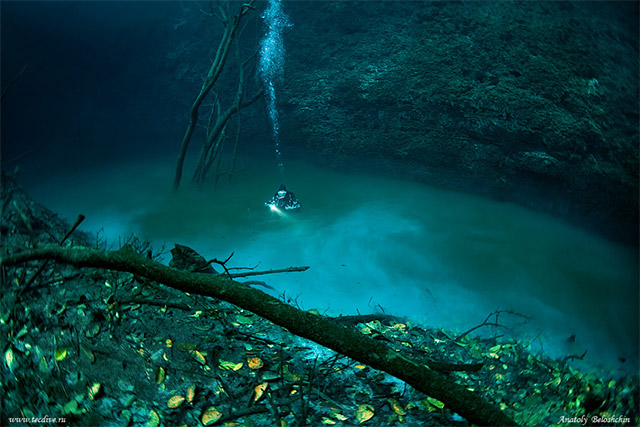* The above processes specifically relied on the destabilization of the sub-cloud layer due to adiabatic or latent heating effects. Discounting the thermodynamical effects of hydrometeor fallout, another mechanism proposes that dynamics of the fallout alone are enough to create the lobes. Inhomogeneities in the masses of the hydrometeors along the cloud-base may cause inhomogeneous descent along the base. Frictional drag and associated eddy-like structures create the lobed appearance of the fallout. The main shortcoming of this theory is that vertical velocities in the lobes have been observed to be greater than the fall speeds of the hydrometeors within them; thus, there should be a dynamical downward forcing, as well.
* Another method, that was first proposed by Kerry Emanuel, is called cloud-base detrainment instability (CDI), which acts very much like convective cloud-top entrainment. In CDI, cloudy air is mixed into the dry sub-cloud air rather than precipitating into it. The cloudy layer destabilizes due to evaporative cooling and mammatus are formed. Issues with this mechanism are that it fails to explain why mammatus are located in specific locations in the anvil rather than under the entire anvil, and it fails to explain how the mixing originates.
* Clouds undergo thermal reorganization due to radiative effects as they evolve. There are a couple of ideas as to how radiation can cause mammatus to form. One is that, because clouds radiatively cool (Stefan-Boltzmann law) very efficiently at their tops, entire pockets of cool, negatively buoyant cloud can penetrate downward through the entire layer and emerge as mammatus at cloud-base. Another idea is that as the cloud-base warms due to radiative heating from land surface’s longwave emission, the base destabilizes and overturns. This method is only valid for optically thick clouds. However, the nature of anvil clouds is that they are largely made up of ice, and are therefore relatively optically thin.
* Gravity waves are proposed to be the formation mechanism of linearly organized mammatus clouds. Indeed, wave patterns have been observed in the mammatus environment, but this is mostly due to gravity wave creation as a response to a convective updraft impinging upon the tropopause and spreading out in wave form over the entirety of the anvil. Therefore, this method does not explain the prevalence of mammatus clouds in one part of the anvil versus another. Furthermore, time and size scales for gravity waves and mammatus do not match up entirely. This being said, gravity wave trains may be responsible for organizing the mammatus rather than forming them.

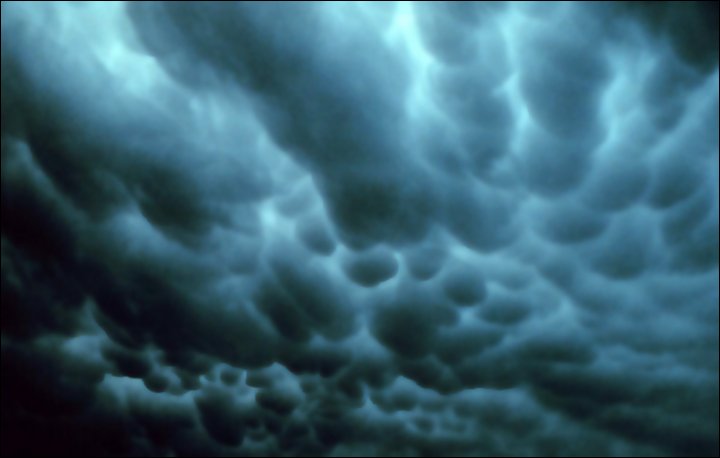
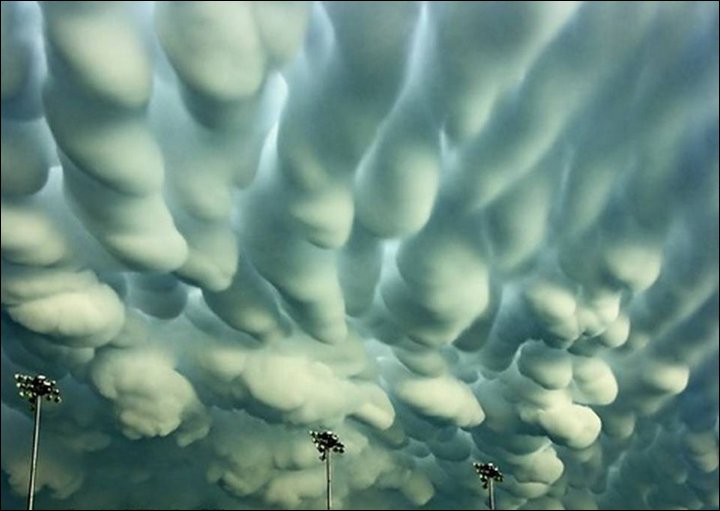
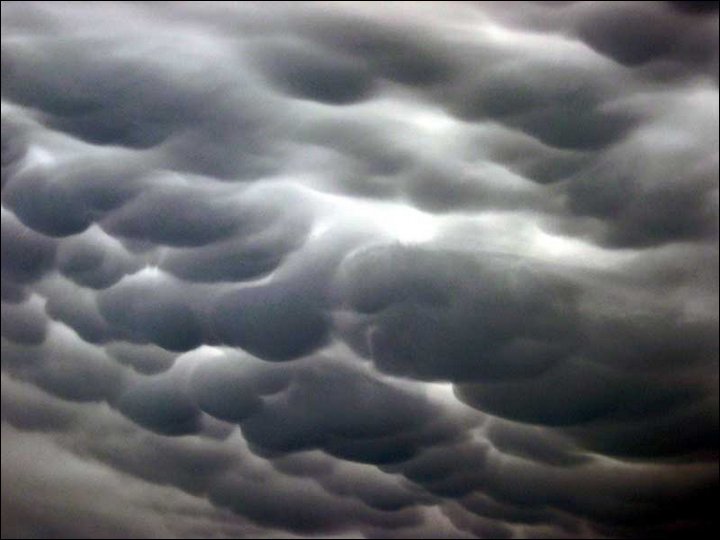
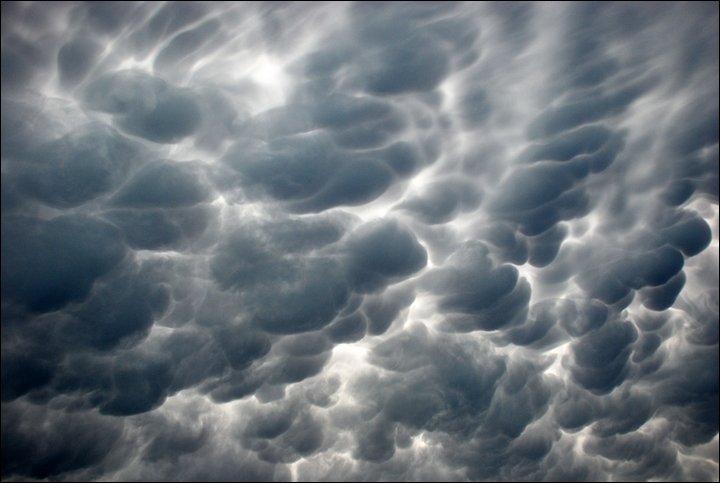
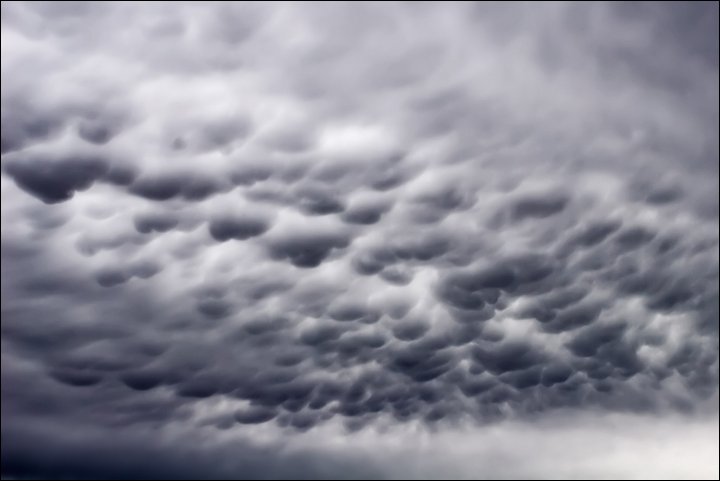
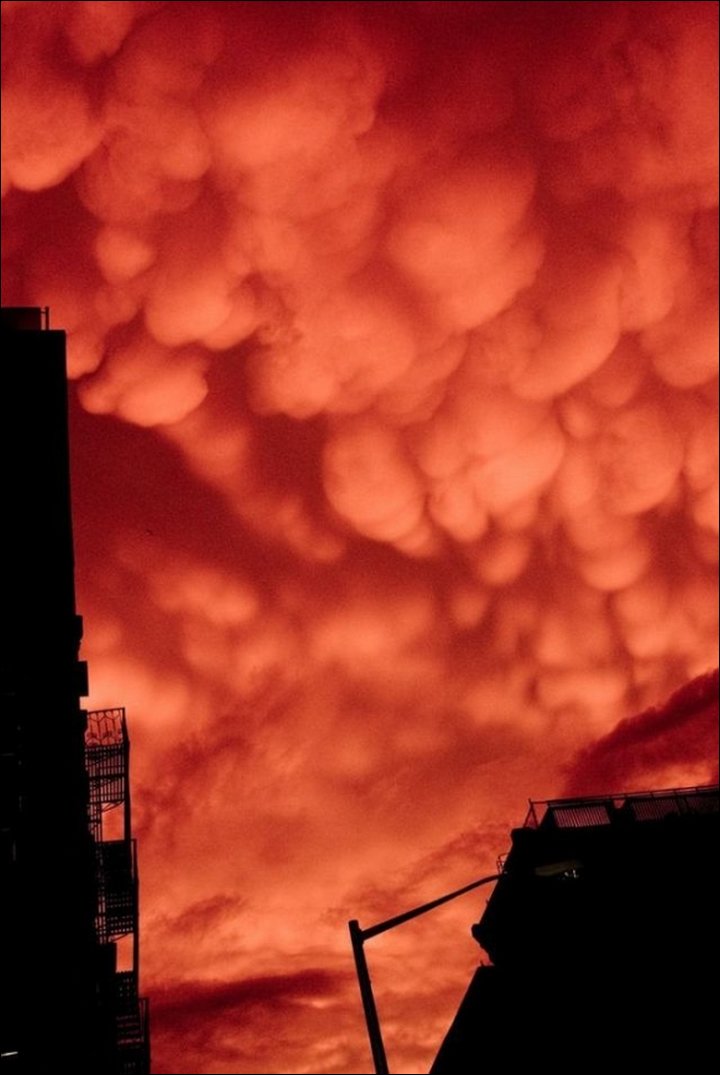
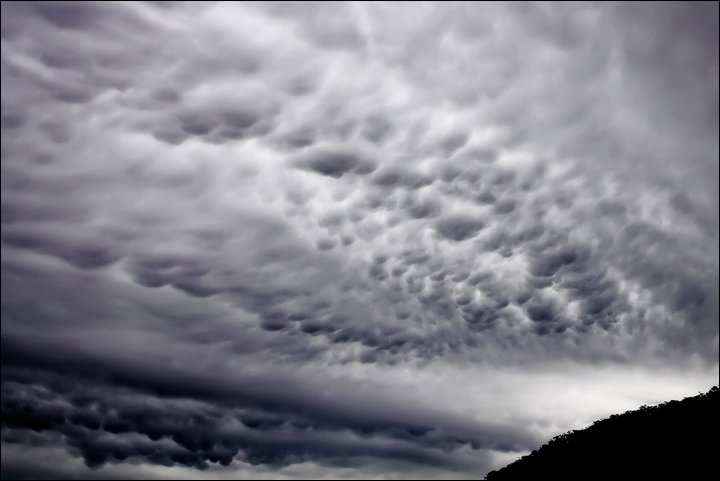
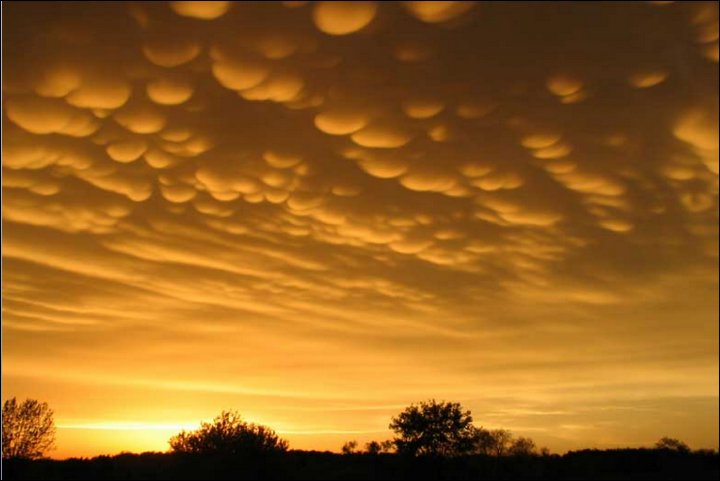
* Kelvin-Helmoltz (K-H) instability is prevalent along cloud boundaries and results in the formation of wave-like protrusions (called Kelvin-Helmoltz billows) from a cloud boundary. Mammatus are not in the form of K-H billows, thus, it is proposed that the instability can trigger the formation of the protrusions, but that another process must form the protrusions into lobes. Still, the main downfall with this theory is that K-H instability occurs in a stably stratified environment, and the mammatus environment is usually at least somewhat turbulent.
* Rayleigh–Taylor instability is the name given to the instability that exists between two fluids of differing densities, when the denser of the two is atop the less dense fluid. Along a cloud-base/sub-cloud interface, the denser, hydrometeor-laden air could cause mixing with the less-dense sub-cloud air. This mixing would take the form of mammatus clouds. The physical problem with this proposed method is that an instability that exists along a static interface cannot necessarily be applied to the interface between two sheared atmospheric flows.
* The last proposed formation mechanism is it arises from Rayleigh-Bénard convection, where differential heating (cooling at the top and heating at the bottom) of a layer causes convective overturning. However, in this case of mammatus, the base is cooled by thermodynamical mechanisms mentioned above. As the cloud base descends, it happens on the scale of mammatus lobes, while adjacent to the lobes, there is a compensating ascent. This method has not proven to be observationally sound and is viewed as generally insubstantial
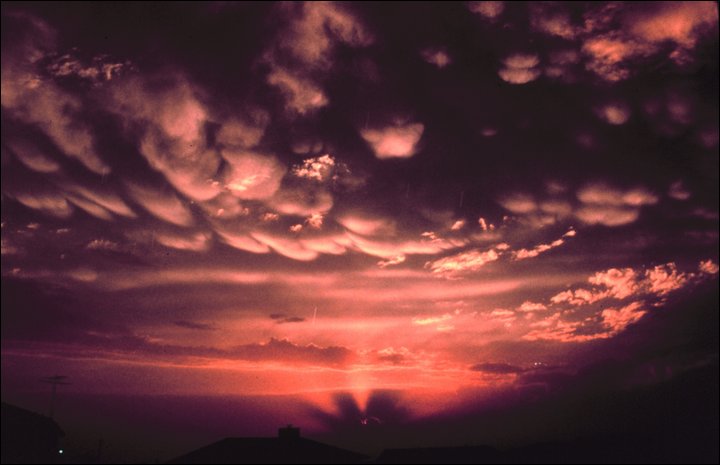

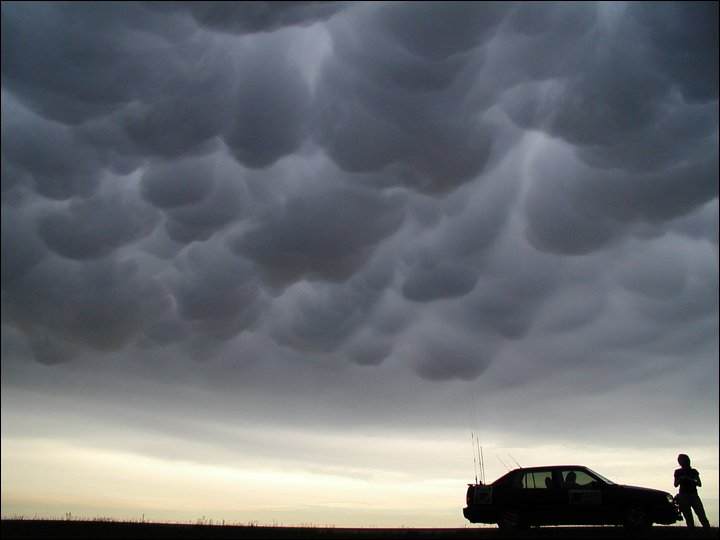
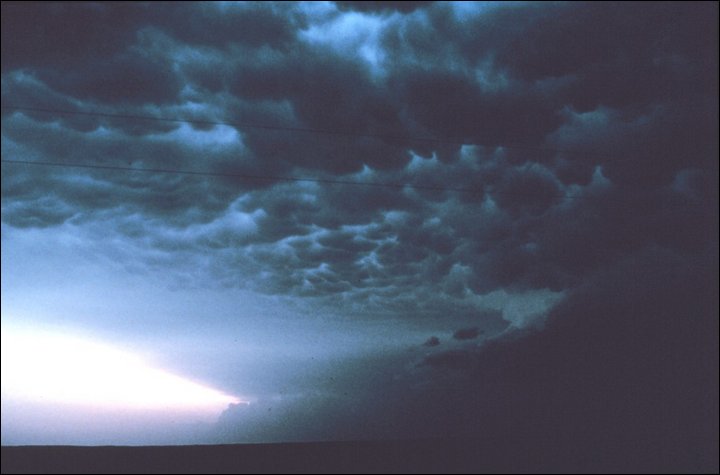
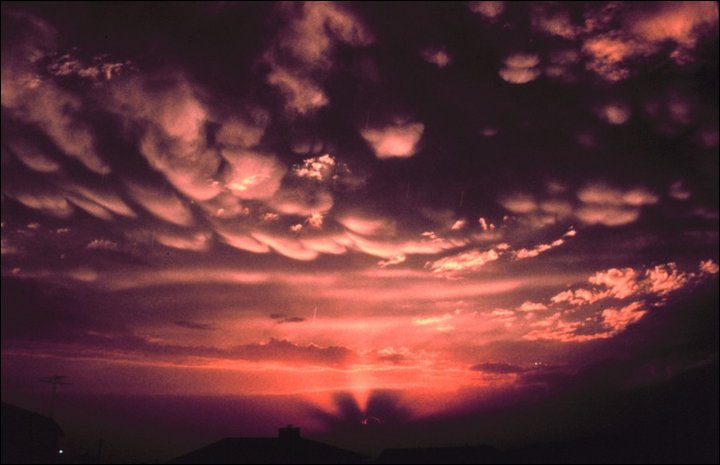
This plenitude of proposed formation mechanisms shows, if nothing else, that the mammatus cloud is generally poorly understood. Detailed observations of the cloud have been meager and usually occur only by chance, since mammatus do not pose a meteorological threat to society. However, scientists’ lack of understanding of the phenomenon exhibits that there are microphysical cloud processes that remain to be researched.
Information and image sources: 1 2 3




